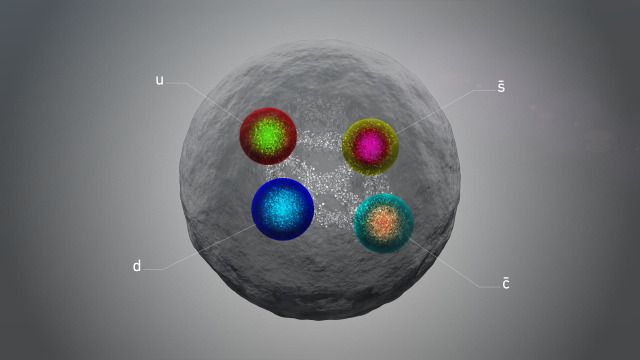The LHCb experiment at CERN has developed a penchant for finding exotic combinations of quarks, the elementary particles that come together to give us composite particles such as the more familiar proton and neutron. In particular, LHCb has observed several tetraquarks, which, as the name suggests, are made of four quarks (or rather two quarks and two antiquarks). Observing these unusual particles helps scientists advance our knowledge of the strong force, one of the four known fundamental forces in the universe. At a CERN seminar held virtually on 11 August, LHCb announced the first signs of an entirely new kind of tetraquark with a mass of 2.9 GeV/c²: the first such particle with only one charm quark.
First predicted to exist in 1964, scientists have observed six kinds of quarks (and their antiquark counterparts) in the laboratory: up, down, charm, strange, top and bottom. Since quarks cannot exist freely, they group to form composite particles: three quarks or three antiquarks form “baryons” like the proton, while a quark and an antiquark form “mesons”.
The LHCb detector at the Large Hadron Collider (LHC) is devoted to the study of B mesons, which contain either a bottom or an antibottom. Shortly after being produced in proton–proton collisions at the LHC, these heavy mesons transform – or “decay” – into a variety of lighter particles, which may undergo further transformations themselves. LHCb scientists observed signs of the new tetraquark in one such decay, in which the positively charged B meson transforms into a positive D meson, a negative D meson and a positive kaon: B+→D+D−K+. In total, they studied around 1300 candidates for this particular transformation in all the data the LHCb detector has recorded so far.
